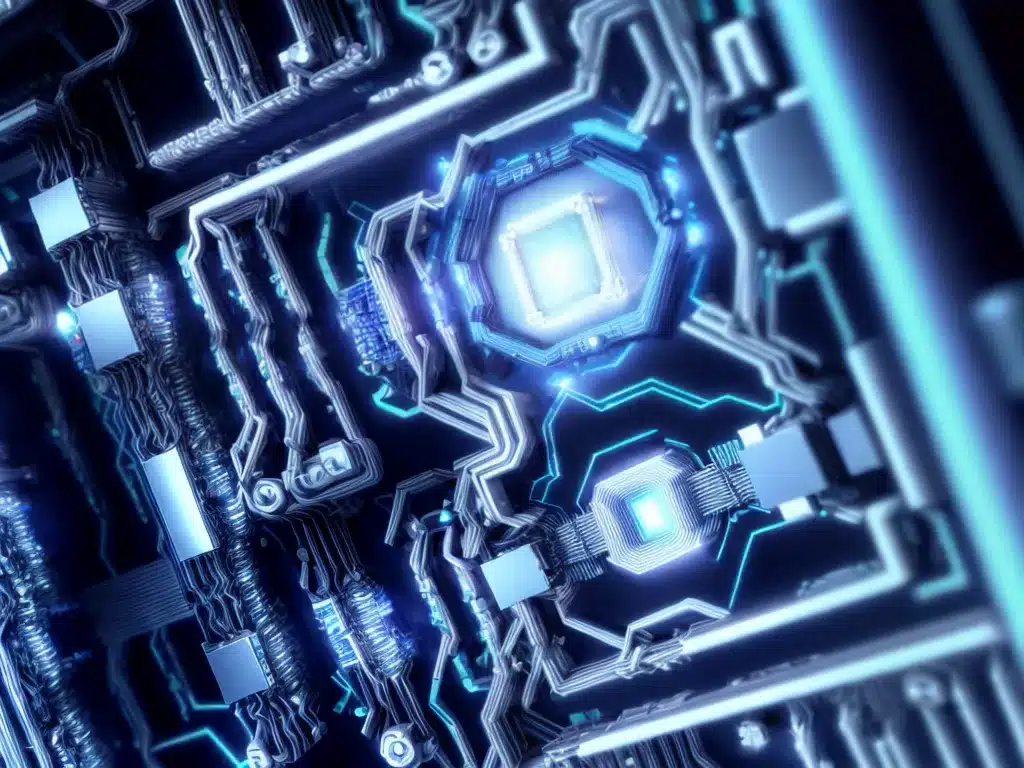
Building a quantum computer requires expertise across multiple scientific disciplines and engineering specialties. While the field is still emerging, researchers have made remarkable progress in developing the key components needed to make large-scale, practical quantum systems a reality. Here I will provide a simplified overview of how quantum computers are assembled, focusing on the core building blocks common to most implementations.
The Qubit
The fundamental unit of quantum information is the qubit, or quantum bit. Unlike classical bits that store information as 0s or 1s, qubits can exist in a superposition of both states simultaneously. This phenomenon, along with the ability for qubits to become entangled with one another, gives quantum computers their immense computational power. However, this delicate quantum behavior also makes physical implementation tremendously challenging.
Qubits must be carefully isolated from the outside environment to prevent decoherence – the loss of information to the surroundings. At the same time, they need to interact with other qubits and be controllable from the outside to perform logical operations. Research groups worldwide are exploring various solutions, but most qubit designs fall into three main categories:
-
Superconducting circuits – Aluminum circuits cooled to near absolute zero exhibit quantum effects. Tunable couplings allow qubit interactions.
-
Trapped ions – Individual atoms suspended by electromagnetic fields act as qubits. Their spin states encode information.
-
Photonics – Photonic devices leverage quantum properties of light particles (photons) to realize qubits.
Each approach has tradeoffs, but steady progress is being made towards more stable, reliable qubits with longer coherence times.
Connecting the Qubits
Once functional qubits have been created, the next requirement is developing an architecture that connects them together. Individual qubits aren’t capable of complex calculations – they must interact coherently to behave as a unified quantum processor.
Qubits are often arranged in regular grids and coupled to their nearest neighbors. The patterns of interaction between qubits are called coupling maps. Effort is made to enable connectivity that supports efficient implementation of quantum circuits and algorithms.
Other important factors in the architecture include:
- Number of qubits
- Coherence times
- Gate fidelities (accuracy of qubit operations)
- Measurement precision
Current quantum computers have 10-100 qubits. It’s estimated that thousands or even millions of high quality qubits will be needed to achieve quantum advantage – outperforming classical supercomputers at practical applications.
Control Systems
In addition to the qubits themselves, complex electronic systems are needed to control the quantum processor and read out measurements.
These include:
-
Cryogenic systems – Infrastructure for cooling qubits to temperatures near absolute zero. Helium dilution refrigerators are commonly used.
-
Microwave electronics – Generate and deliver microwave pulses to manipulate qubit states.
-
Amplifiers – Built to amplify faint qubit signals for measurement while adding minimal noise.
-
Digital electronics – Enable programming of qubit control sequences and digitize/process measurement results. Often use field-programmable gate arrays (FPGAs).
-
Classical computer – Orchestrates operation of the quantum system. Optimization to reduce latency is an active area of development.
The control systems must be designed to precisely synchronize qubit manipulations across the entire architecture and read out quantum states with high fidelity. As the number of qubits grows, the complexity of controls becomes challenging.
System Integration
Building a quantum computer is in essence a massive systems engineering project, requiring close integration of all components – qubits, interconnects, electronics, software stack, etc. Thorough characterization and calibration is done to understand and optimize performance at both the individual and system level.
Careful assembly is carried out, often involving precision machining and microfabrication techniques borrowed from the semiconductor industry. Components need to be shielded from external noise and interference. Thermal management and vibration control are also critical.
Teams of physicists, engineers, and software developers collaborate to create functioning quantum computers. While there are still daunting technical obstacles ahead, our deepening mastery of quantum phenomena will enable this powerful new computational paradigm to be practically harnessed.












